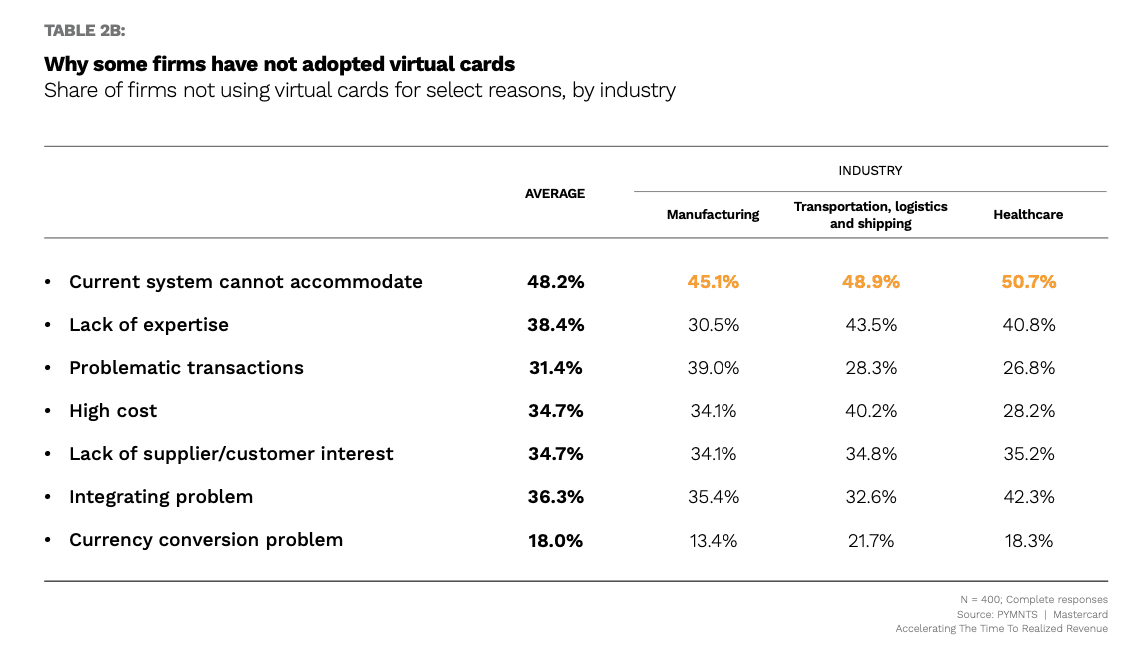48% of Businesses Say They’re Unprepared to Handle Virtual Cards

Virtual cards can help businesses streamline their business-to-business (B2B) operations, improve efficiencies and ultimately boost their bottom lines.
Still, many firms are hesitant to adopt the technology.
Several key barriers prevent many U.S. and Canadian firms from adopting virtual card innovations that can enhance their payments processes, according to “Accelerating the Time to Realized Revenue,” a PYMNTS and Mastercard collaboration based on a survey of 409 corporate executives from U.S. and Canadian firms.
Get the report: Accelerating the Time to Realized Revenue
The two most common reasons businesses give for not using virtual cards are that their current systems cannot accommodate virtual cards and that they simply feel they lack the in-house expertise they need to effectively implement virtual cards.
The belief that their current systems cannot accommodate virtual cards is the chief barrier, with 48% of the businesses that were surveyed citing that as a reason.
Feeling they lack in-house expertise is the second most cited reason, with 38% of businesses saying that’s why they have not adopted virtual cards.

Using third-party providers to access virtual cards can help mitigate some of these issues.
Outsourcing virtual card operations to trusted third parties can not only grant businesses access to the subject matter expertise they are lacking in-house, but these vendors can also work with businesses to find solutions compatible with their information technology (IT) systems.
While enlisting help from third-party providers can help overcome these hurdles to adoption, that is only the first step in what should ideally be a multifaceted approach to education and discussion about the benefits of virtual cards.
In fact, PYMNTS research has found that businesses using virtual cards report a wide range of operational benefits, including lower transaction costs, tighter security, enhanced cash flow management and greater access to both rebates and credit.
